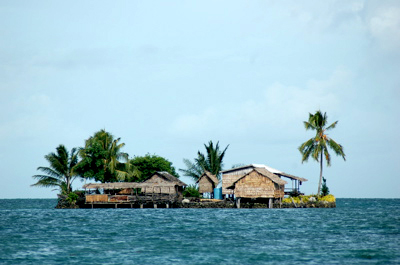|
Funaafou
Funaafou or Funa'afou is an artificial island built on the reef in the Lau Lagoon off the northeast coast of Malaita Island. Administratively, it is in the Malaita Province of the Solomon Islands Solomon Islands is an island country consisting of six major islands and over 900 smaller islands in Oceania, to the east of Papua New Guinea and north-west of Vanuatu. It has a land area of , and a population of approx. 700,000. Its capita .... Funa'afou island, which is near the edge of the Makwanu Passage, has about 200 inhabitants. It is the first artificial Island built in the Lau lagoon. According to history, the people of Baleo tribe are the first descendants of Funafou Islands References External links Funaafou on Solomonislands.com.sb Islands of the Solomon Islands {{Solomons-geo-stub ... [...More Info...] [...Related Items...] OR: [Wikipedia] [Google] [Baidu] |
Lau Lagoon
Lau Lagoon is a part of the Solomon Islands. It is located on the northeast coast of Malaita Island. The lagoon is more than 35 kilometers long and contains about 60 artificial islands built on the reef. The Lau lagoon is home to a number of different villages. The largest village is Forau, which has around 1,500 permanent residents but can swell to three times that number during important local feasts or religious holidays (e.g. Christmas, Easter). The road from Auki, which passes through Malu'u, ends at Fouia wharf opposite the islands of Sulufou and Adagege in the Lau Lagoon. Funa'afou island, which is located near the edge of the Makwanu Passage, has about 200 inhabitants. The Lau Lagoon is otherwise only accessible by sea. History of the Lau people The people of the Lau Lagoon call themselves ''wane i asi'' 'salt-water people' as distinct from ''wane i tolo'' 'bush people' who live in the interior of the island. There was a history of conflict between the bush people ... [...More Info...] [...Related Items...] OR: [Wikipedia] [Google] [Baidu] |
Malaita Province
Malaita Province is the most populous and one of the largest of the nine provinces of Solomon Islands. It is named after its largest island, Malaita (also known as "Big Malaita" or "Maramapaina"). Other islands include South Malaita Island (also called "Small Malaita" or "Maramasike"), Sikaiana Island, and Ontong Java Atoll. Britain defined its area of interest in the Solomons, including Malaita, and central government control of Malaita began in 1893, when Captain Gibson R.N., of , declared the southern Solomon Islands as a British Protectorate with the proclamation of the British Solomon Islands Protectorate. The provincial capital and largest urban center is Auki, which was established as the Administrative center for Malaita Province in 1909. Tourism is largely underdeveloped in Malaita; Auki is near to the Langa Langa Lagoon, which provides opportunities for snorkeling, and the villagers provide shell making demonstrations. [...More Info...] [...Related Items...] OR: [Wikipedia] [Google] [Baidu] |
Artificial Island
An artificial island is an island that has been constructed by people rather than formed by natural means. Artificial islands may vary in size from small islets reclaimed solely to support a single pillar of a building or structure to those that support entire communities and cities. Early artificial islands included floating structures in still waters or wooden or megalithic structures erected in shallow waters (e.g. crannógs and Nan Madol discussed below). In modern times artificial islands are usually formed by land reclamation, but some are formed by the incidental isolation of an existing piece of land during canal construction (e.g. Donauinsel, Ko Kret, and much of Door County, Wisconsin), or flooding of valleys resulting in the tops of former knolls getting isolated by water (e.g., Barro Colorado Island). One of the world's largest artificial islands, René-Levasseur Island, was formed by the flooding of two adjacent reservoirs. History Despite a popular image of mode ... [...More Info...] [...Related Items...] OR: [Wikipedia] [Google] [Baidu] |
Malaita Island
Malaita is the primary island of Malaita Province in Solomon Islands. Malaita is the most populous island of the Solomon Islands, with a population of 161,832 as of 2021, or more than a third of the entire national population. It is also the second largest island in the country by area, after Guadalcanal. A tropical and mountainous island, Malaita's river systems and tropical forests are being exploited for ecosystem stability by keeping them pristine. The largest city and provincial capital is Auki, on the northwest coast and is on the northern shore of the Langa Langa Lagoon. The people of the Langa Langa Lagoon and the Lau Lagoon on the northeast coast of Malaita call themselves ''wane i asi'' ‘salt-water people’ as distinct from ''wane i tolo'' ‘bush people’ who live in the interior of the island. South Malaita Island, also known as ''Small Malaita'' and ''Maramasike'' for Areare speakers and Malamweimwei known to more than 80% of the islanders, is the island at ... [...More Info...] [...Related Items...] OR: [Wikipedia] [Google] [Baidu] |
Solomon Islands
Solomon Islands is an island country consisting of six major islands and over 900 smaller islands in Oceania, to the east of Papua New Guinea and north-west of Vanuatu. It has a land area of , and a population of approx. 700,000. Its capital, Honiara, is located on the largest island, Guadalcanal. The country takes its name from the wider area of the Solomon Islands (archipelago), which is a collection of Melanesian islands that also includes the Autonomous Region of Bougainville (currently a part of Papua New Guinea), but excludes the Santa Cruz Islands. The islands have been settled since at least some time between 30,000 and 28,800 BCE, with later waves of migrants, notably the Lapita people, mixing and producing the modern indigenous Solomon Islanders population. In 1568, the Spanish navigator Álvaro de Mendaña was the first European to visit them. Though not named by Mendaña, it is believed that the islands were called ''"the Solomons"'' by those who later receiv ... [...More Info...] [...Related Items...] OR: [Wikipedia] [Google] [Baidu] |


%2C_by_Mason_&_Co..jpg)